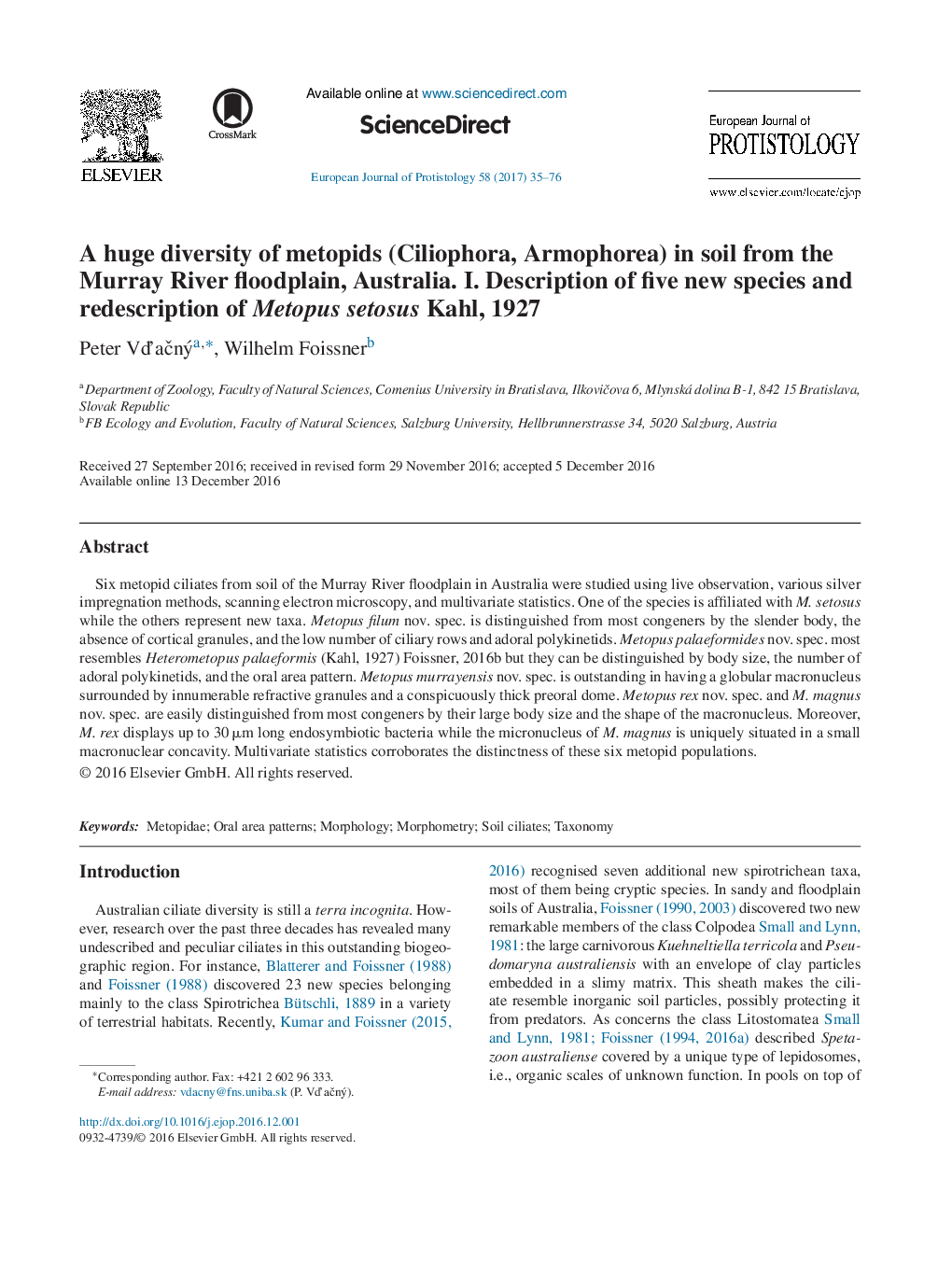| Article ID | Journal | Published Year | Pages | File Type |
|---|---|---|---|---|
| 5517558 | European Journal of Protistology | 2017 | 42 Pages |
Six metopid ciliates from soil of the Murray River floodplain in Australia were studied using live observation, various silver impregnation methods, scanning electron microscopy, and multivariate statistics. One of the species is affiliated with M. setosus while the others represent new taxa. Metopus filum nov. spec. is distinguished from most congeners by the slender body, the absence of cortical granules, and the low number of ciliary rows and adoral polykinetids. Metopus palaeformides nov. spec. most resembles Heterometopus palaeformis (Kahl, 1927) Foissner, 2016b but they can be distinguished by body size, the number of adoral polykinetids, and the oral area pattern. Metopus murrayensis nov. spec. is outstanding in having a globular macronucleus surrounded by innumerable refractive granules and a conspicuously thick preoral dome. Metopus rex nov. spec. and M. magnus nov. spec. are easily distinguished from most congeners by their large body size and the shape of the macronucleus. Moreover, M. rex displays up to 30 μm long endosymbiotic bacteria while the micronucleus of M. magnus is uniquely situated in a small macronuclear concavity. Multivariate statistics corroborates the distinctness of these six metopid populations.
